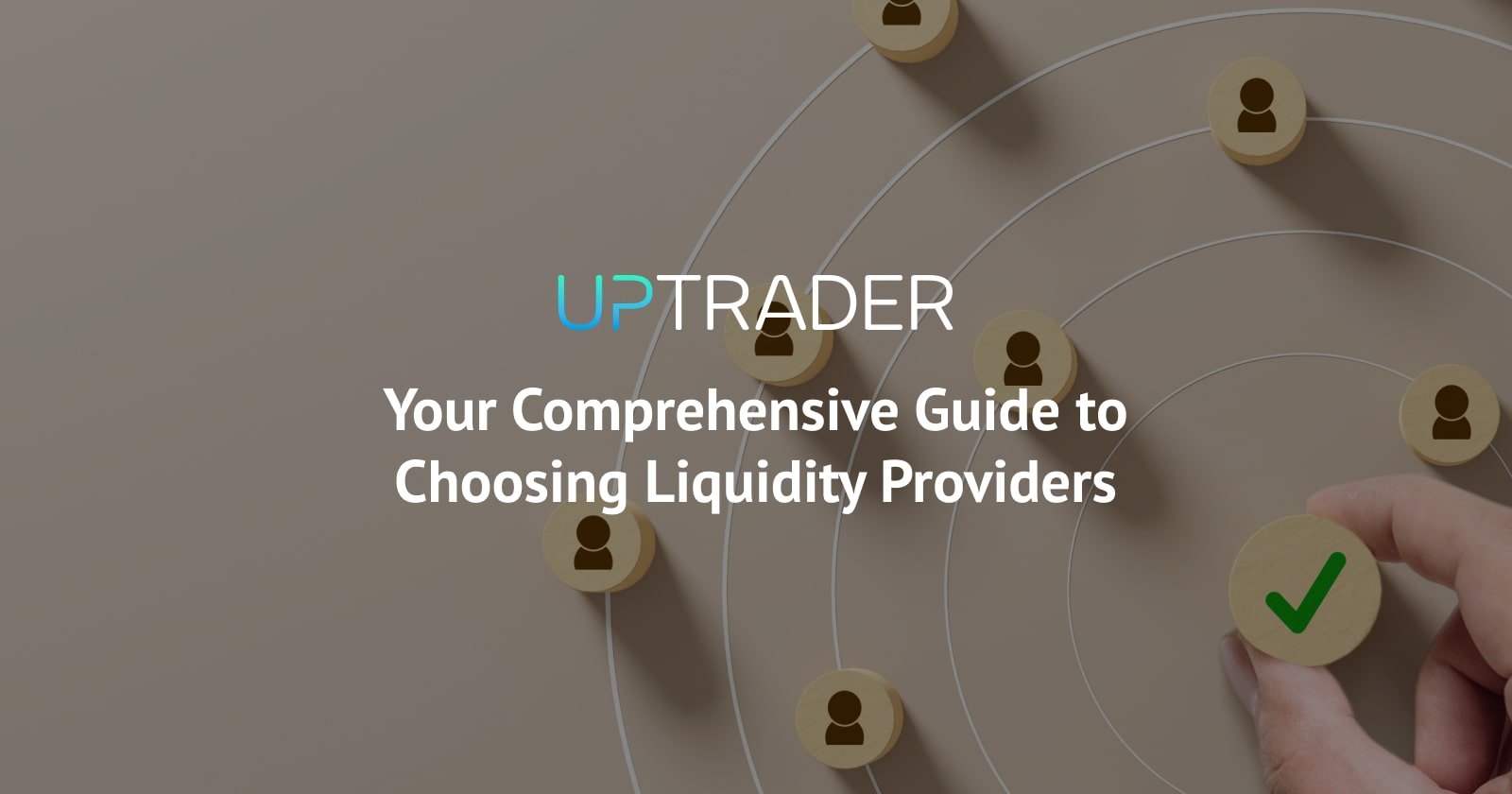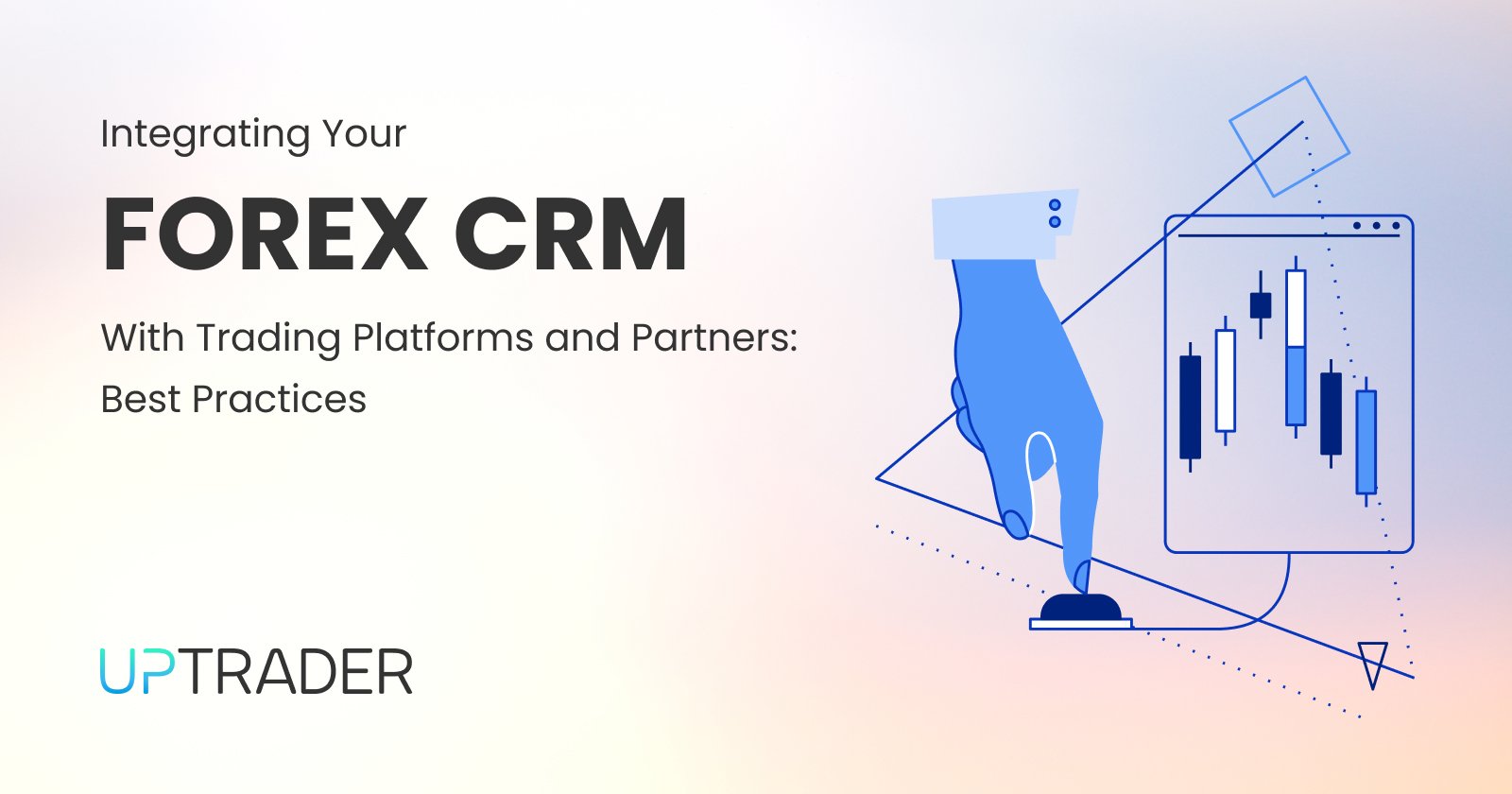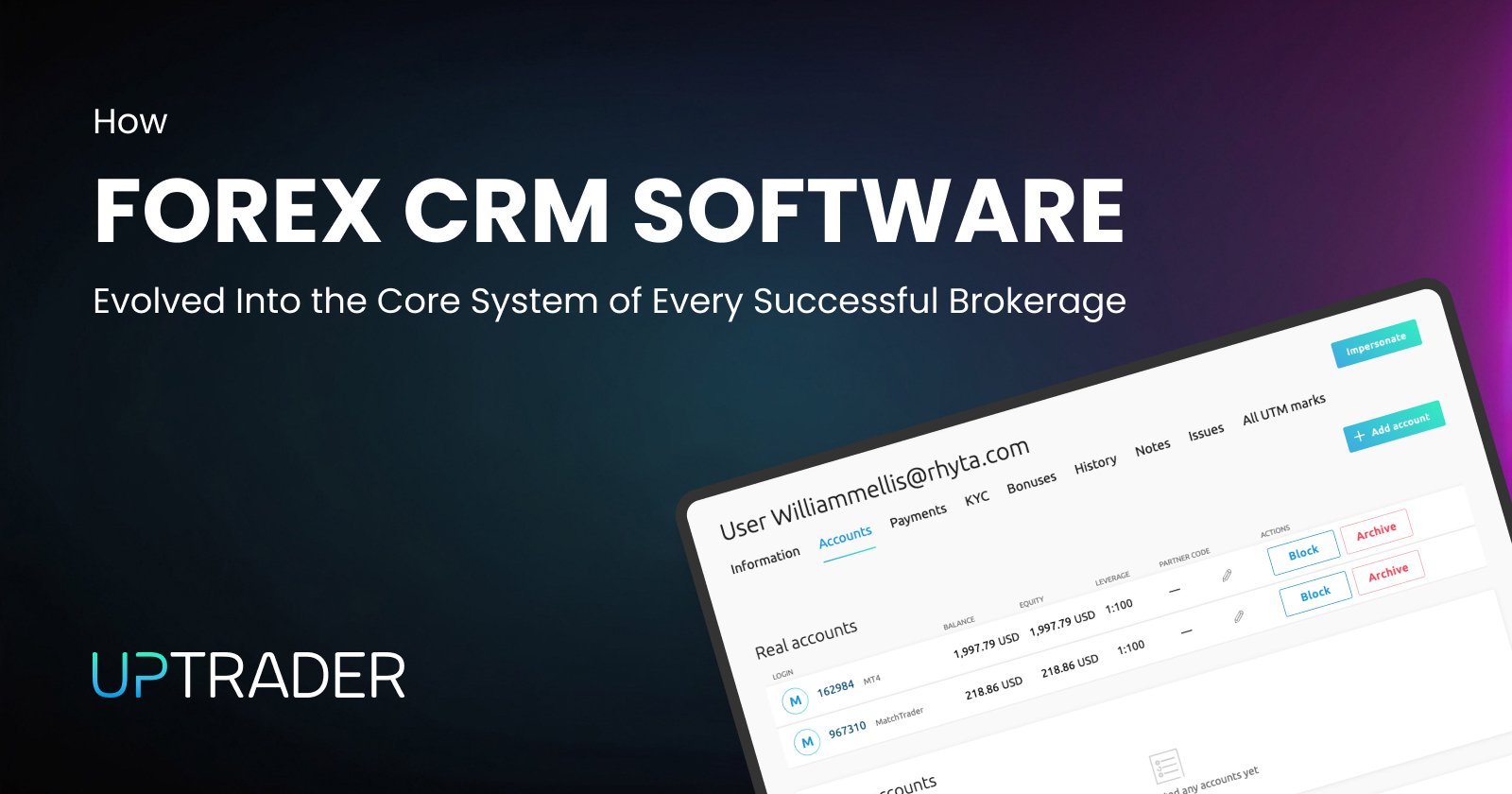Your Comprehensive Guide to Choosing Liquidity Providers

Share this publication:
In the world of foreign exchange, having access to liquidity and ensuring a stable, efficient flow of transactions is crucial. Your success as a forex broker largely depends on your ability to find the right liquidity provider that meets your specific needs. A good liquidity provider should help ensure optimal transaction execution, minimizing your transaction costs, and enhancing your operational efficiency.
A great partner isn't just providing liquidity, they’re paving your way to success in the forex trading market. But, how to make the right choice? Here's a guideline to steer you in the right direction.
Liquidity refers to the ability to buy or sell a security or an asset in the market quickly without significantly affecting the asset's price. In other words, it is the degree to which a particular asset can be easily converted into cash.
High liquidity indicates that there is a high number of buyers and sellers in the market. It suggests that transactions can be executed rapidly and at a price that does not affect the asset's market price too much. Highly liquid markets are typically associated with less risk because it's easy for you to open and close positions without causing a drastic change in the price.
A liquidity provider is a financial institution that ensures that a specific market remains liquid, thereby facilitating consistent trading activities. Essentially, as a broker, you should understand that liquidity providers act like wholesalers. They sell or buy securities and other assets in large quantities, helping to prevent drastic price movements and providing the market with its required liquidity.
Consider their Liquidity Package
A key element a broker must scrutinize in a liquidity provider is the liquidity package – meaning, what type of assets and liquidity are offered. Liquidity package offered by your liquidity provider has a direct impact on your brokerage firm's financial success and credibility.
The provision of nominal accounts in various currencies can be advantageous, along with the capacity to process deposits and withdrawals using major currencies, metals, stable tokens or cryptocurrencies.
With an expansive array of instruments at its disposal, such as Forex, crypto, spot metals, indices, shares, bonds, and futures, UpTrader can aid you in sourcing liquidity. Ensuring that the liquidity provider affords you multi-asset liquidity in conjunction with historical data is crucially significant.
These days, it's crucial for a provider to have access to crypto liquidity. Even with the volatile nature of demand for cryptocurrency trading, having ready access to them is necessary to cope with sudden surges in demand without losing customers. Hence, when selecting a provider, consider their crypto trading conditions.
Execution speed and spread width are key indicators by which your clients will determine the profitability of working with you.
- Order execution speed in trading refers to the amount of time it takes for a trade order to be processed once it's been submitted. In a fast-paced trading setting where prices can alter within milliseconds, a broker's capacity to quickly execute orders can significantly influence trade profitability. Swift order execution can assist traders in implementing their trading plans more effectively, particularly in volatile markets.
- A dealing spread, or bid-ask spread, is essentially the difference between the highest price a buyer is willing to pay for an asset (bid) and the lowest price a seller is ready to sell it for (ask). The narrower the spread, the more liquidity the market tends to have, which can be advantageous for your clients. This means that the securities can be bought or sold rapidly at predictable prices. Clients who engage in numerous trades are particularly affected by this, as it can have a substantial impact on their overall profitability.
- Impact on Traders: Traders typically aim to have their orders executed at optimal prices with minimal costs. Therefore, brokers offering faster execution and tighter spreads are usually more attractive to traders, especially those engaged in day trading or scalping.
- Overall Competitiveness: The ability to offer fast execution and competitive spreads can significantly enhance a broker's market appeal, attracting more clients and improving their satisfaction and loyalty.
- Technological Aspect: The speed of execution also depends on the broker's technological infrastructure, including server quality, data center locations, and the efficiency of trading platforms.
However, it's important to remember that each instrument has its own liquidity. For example, the EUR/USD pair has very high liquidity as the most demanded instrument, while the IRR/XAF pair is significantly lower. Additionally, different times of the day can also affect liquidity. Therefore, it's not always fair to blame the providers.
Have Multiple Liquidity Providers
When it comes to brokerage operations, liquidity is a key factor. The dependency on one liquidity provider leaves brokers vulnerable to potential disruption and unforeseen consequences. Hence, working with multiple providers is crucial for brokers to mitigate such risks.
Partnering with multiple liquidity providers allows you to scan and choose the most competitive rates for your transactions. This way, you can take advantage of price competition among various providers to secure the best deals for your clients, thereby boosting your profitability and competitiveness.
However, it's important to bear in mind that managing too many liquidity providers comes with its own set of challenges. As a broker, you're expected to assure each provider a certain volume of transactions.
Even so, it's essential for you to have access to a minimum number of diverse liquidity providers. You should distribute the provided liquidity based on each liquidity provider's specific strengths, type of asset, specific currency pairs, and customer groups.
Meeting all your clients' needs is the ultimate goal, hence the need for your liquidity providers to have the appropriate technology to meet their needs.
At UpTrader, we're committed to assisting you with connecting to any of your preferred Forex or crypto liquidity providers. Rest assured that all trades are conducted on a dedicated liquidity server.
Tier 1, tier 2…etc
Liquidity providers can be classified into several categories, namely tier 1, tier 2, tire 3 and so on. Tier 1 providers, also referred to as Prime Brokers, are typically accessible only after meeting their stringent compliance requirements.
Generally, securing access to Tier 1 liquidity providers necessitates holding a valid license and being recognized within a white-list jurisdiction. Should these criteria not be met, you might consider exploring other options amongst intermediary providers. These intermediaries act as a bridge, connecting you with liquidity providers even if you don't meet all the necessary compliance requirements.
But is it really that bad to have a tier 2, tier 3, or even tier 4 liquidity provider?
It depends on the type of your business and on the scale of your operation. If you're a broker just starting out in the industry or running a smaller scale operation, working with a Tier 3 or Tier 4 liquidity provider could be suitable for your needs and you’ll be able to provide great trading conditions for your traders. You don't necessarily need to have a Tier 1 or Tier 2 liquidity provider if your business model is geared towards smaller volume trades. We previously discussed how A-Book and B-Book models work, and what benefits each of them and their hybrid model provide.
Consider Your Specific Needs and the Model You Use
In a nutshell, the A-Book model, also known as agency model, is when you, as a broker, pass on all trades directly to liquidity providers. Your income is primarily derived from spreads and commissions. This model completely removes the potential conflict of interest as you won't stand to gain if your trader loses.
The B-Book model involves brokers taking the other side of the traders' transactions. This means you keep the trades on your own book instead of sending them to liquidity providers. Here, brokers might stand to profit if a trader makes a loss. Although it involves a certain degree of risk, this model also offers higher profitability.
Lastly, the Hybrid model is a combination of the A-Book and B-Book model. Using this model, you would handle the less profitable trades using the A-Book model, passing them to liquidity providers. The potentially profitable trades would be kept on the B-Book. Essentially, this model gives you the best of both worlds. You get the higher profitability potential from B-Booking and reduced risk from A-Booking.
Choosing the appropriate model will be contingent on your firm’s trading volume, capitalization, risk tolerance, and overall business strategy.
Evaluate Their Transparency and Reputation
Transparency in trading is non-negotiable. Your potential liquidity provider should maintain high levels of integrity, including full disclosure of fees and charges, no hidden terms, and clear communication. Knowing what you're getting into, without any unpleasant surprises, is integral to fostering trust. The best liquidity providers are those who offer transparent pricing, execution, and trade-cost structures. They should also offer you full visibility over your trades.
Please ensure that you take the time to research your potential liquidity providers thoroughly. Their longevity in the market can often serve as a good indicator of their reliability, especially considering the high-speed nature of trading.
Compare Price Competitiveness
In a sector where profitability is closely tied to spreads, getting a liquidity provider that offers the most competitive prices becomes critical. Remember, as a broker, your earnings come from the gap between the spread your liquidity provider sets and the spread for your traders. To ensure you offer compelling conditions to your traders, yet also guarantee your own profitability, it's paramount to opt for a liquidity provider with tight spreads.
With UpTrader, you have the power to set your own spreads. Utilizing the liquidity of crypto and Forex gives you the capacity to lure clients with tight spreads. By determining your own spreads, you can tailor it according to your business model.
Consider Your Target Clientele
For brokers who generate income from spreads, large volume trading is more profitable. Consequently, your provider of choice should be able to attract and serve professionals who are prone to high volume trades, thereby securing better profit margins.
Choosing a liquidity provider shouldn't be rushed, and as highlighted, several criteria are worthy of your consideration. Therefore, analyze, compare, and make the best choice for your business's unique needs. Your right liquidity provider will certainly make your path to success a lot smoother.
Take Note of Their Technology
You don't want to fall behind due to outdated technology. Look for liquidity providers who invest in innovative trading technologies that assure efficient transactions, enhanced security, and reduced slippages. Technology and connectivity are key components to an optimal trading environment.
UpTrader utilises two key technologies in its platform; Straight Through Processing (STP) and Electronic Communication Network (ECN). These technologies play vital roles in improving the efficiency, transparency and speed of your transactions, thereby giving you an edge in today's competitive marketplace.
STP allows for seamless processing of trades from order initiation to completion, without any manual intervention. This significantly reduces errors and delays in trade execution, providing you a significant advantage especially during times of high volatility in the market. It allows your brokerage firm to become more productive and responsive to market changes. By reducing human involvement, STP can save time, reduce costs, and most importantly, minimize risk of manual errors. As a broker, this gives you peace of mind and ensures your clients have a smoother, more efficient trading experience.
On the other hand, ECN connects traders directly to liquidity providers like banks, other brokers and market participants over a global network. It is characterized by its high speed of transactions and low spreads. ECN increases the transparency in your transactions as it displays the best bid and offer prices available in the market, with immediate trade execution. This allows you as a broker to provide a fair and transparent trading environment for your clients, where trades are executed instantly and at the most competitive prices. Moreover, by displaying depth of market data, ECN can empower your clients to make informed decisions.
In a nutshell, the combination of STP and ECN technologies brings an unparalleled level of efficiency and transparency to your brokerage operations, delivering better customer service and driving the success of your brokerage firm in the long run.
Financial Instruments
At UpTrader, we offer an extensive portfolio of over 700 financial instruments across 7 distinct asset classes that you, as a broker, can take advantage of.
We offer you exposure to the highly dynamic FOREX market which deals with the exchange of global currencies. Indices trading can provide you access to a group of stocks representing a particular market sector or economy. You also have the opportunity to deal in company shares, allowing you to tap into the potential profits from various corporate enterprises.
Our precious metals asset class provides the opportunity to diversify your investments with secure and tangible commodities like gold and silver. For those interested in the energy sector, we offer energy assets, covering products such as oil and gas.
Lastly, cryptocurrencies have grown significantly in popularity, becoming an indispensable part of the financial world. Our cryptocurrency assets present an innovative avenue for potentially high returns in this evolving market.
Leveraging our solid reputation, in-depth understanding of financial markets and access to the best solutions, UpTrader aims to offer you a robust and comprehensive trading platform. Trust us to guide your financial journey.
Market depth
Market depth is essentially a real-time list showing the quantity of buy and sell orders for a particular asset, typically at different price points. In the trading environment, you can see this information as an electronic list of buy and sell orders, structured by price level.
As a broker, it is important for you to understand market depth because it gives you a snapshot of both the liquidity and depth for a specific security at any given time. A market with good depth is one that will not experience a drastic price shift with significant orders. If a market has good depth, it can absorb order flow without significant impact on the price level.
The significance of market depth comes into play when choosing a liquidity provider. A provider with good market depth allows you to have plenty of room to make trades without worrying about a massive impact on prices, while one with poor market depth may not be able to absorb larger trades. The liquidity provider should be able to supply adequate liquidity to maintain smooth operation of the markets without creating excessive volatility.
Moreover, having a liquidity provider with significant market depth gives you more flexibility to execute trades, whether small or large, at any given time. It also enables you to provide better services to your clients as their trades are likely to be executed swiftly and efficiently without excessive price slippage.
Therefore, in your decision-making process about which liquidity provider to partner with, consider their market depth. By doing so, you ensure a smooth trading experience for yourself and your clients.
Data flows
Data flows are streams of information that pass between two points in a system. These data are crucial in financial trading as they reflect a vast array of metrics and information that traders and brokers use to make informed decisions. Data flows can include price information, transaction histories, liquidity availability, order execution times, and more. Essentially, data flows make the backbone of trading as they connect all market participants together and provide necessary data for informed decision-making.
Now, let's talk about why data flows matter when you, as a broker, are choosing a liquidity provider.
1. Accurate pricing: High-quality data flows from liquidity providers ensure that you have the most accurate, real-time pricing data. This helps you provide competitive and reliable prices to your clients, increasing their satisfaction and trust in your services.
2. Swift transactions: Timely and smooth data flows also guarantee swift order executions. If data flows are inefficient or delayed, it can lead to slow transaction times which can ultimately result in slippage - a cost your clients would want to avoid.
3. Real-time risk management: With up-to-the-second data flow, you can offer real-time risk management solutions, providing your clients with necessary precautions to minimize losses.
4. Transparency: Consistent data flow ensures transparency. It lets you provide your clients with immediate updates and access to important trading information, thus increasing their trust in your operations.
5. Strategic decision-making: The more quality data you have access to, the more informed decisions you can make on behalf of your clients. Reliable data flows allow you to analyze the market more effectively and formulate the best trading strategies.
So, considering the importance of these factors, it's clear that when you're choosing a liquidity provider, the quality and reliability of their data flows should be at the forefront of your evaluation. You want to ensure your liquidity provider can deliver robust, reliable and real-time data that can assist in every aspect of your trading operations and meet your clients' expectations.
Reporting requirements
Reporting in brokerage refers to the act of creating and maintaining a detailed record of all your trading activities. It involves compiling comprehensive, well-documented reports that reflect various aspects of your trading activities. This is crucial for managing operations effectively, making strategic decisions, adhering to regulatory compliance, and providing transparency to your clients.
The variety of reports includes trade reports, FIX bridge reports, swap and rollover reports, and order book access.
1. Trade Reports: As a broker, these give you detailed insights into executed trades, enabling you to manage your transactions efficiently and measure their effectiveness. They provide you with essential information like trading volumes, assets traded, the profitability of each trade, time of trades, and so on.
2. FIX Bridge Reports: FIX (Financial Information eXchange) bridge reports involve tracking and monitoring FIX messaging activities between you, the broker, and your liquidity providers or exchanges. This is vital to ensure a smooth, effective, and secure transmission of your trading orders.
3. Swap and Rollover Reports: As a broker, swap or rollover reports are crucial for your operation, as they provide you with insights on interest fees that you've either received or paid for keeping positions open overnight. This helps you analyze the cost-effectiveness of keeping trades open beyond the trading day and decide on suitable trading strategies.
4. Order Book Access: This refers to a record of all pending orders for a specific financial instrument. By having access to this, you get an understanding of the market depth and the supply and demand of various assets. It assists in decision-making, as it gives real-time information about other market participants’ trading actions and their possible impact on prices.
When choosing a liquidity provider, reporting is a critical factor to consider as it can directly impact the efficiency and profitability of your trades. Good reporting allows for an efficient, streamlined operation, improves the ability to make strategic decisions, helps to identify any irregularities or discrepancies early, ensures regulatory compliance, and increases overall transparency for your clients.
As a broker, accurate and detailed reporting should be a priority. The right reports help in decision-making, can influence trading strategies, help you keep track of all your trades and ultimately enable you to run your brokerage business efficiently and profitably. It can provide insights that could be the key to your success in the brokerage world.
Customer service
There are several reasons why customer service is important for you as a broker:
1. Fast Problem Resolution: Financial markets operate at lightning speed, so any technical issue, delay or error in data feed can translate into a significant loss. When problems occur, a good customer service department is instrumental in getting things sorted quickly, thereby reducing potential financial risks.
2. Reliable Support: Being able to contact your liquidity provider quickly and easily when needed is crucial. It allows you to solve any problems that arise, clarify uncertainties, and receive immediate advice about optimal service use.
3. Increased Trust: Consistent and reliable customer service increases your trust in the liquidity provider. In a sector where massive financial transactions take place daily, trust and reliability are key. The better the customer service, the more confidence you will have in your liquidity provider.
4. Optimizing Service Use: High-quality customer service can help you understand how to make the most of the products and services provided, making your operations more efficient and profitable.
5. Retaining Competitive Edge: A liquidity provider with great customer service helps you meet your client’s expectations more efficiently, ensuring you keep your competitive edge in the marketplace. In a fast-paced environment where quick decision-making is critical, you need all the support you can get to maintain the performance level of your operations.
Hence, while considering a liquidity provider, you shouldn't underestimate the value of excellent customer service.
UpTrader is a trustful liquidity provider
At UpTrader, we provide forex brokers with top-tier liquidity solutions, offering advanced access to market liquidity, essential infrastructure, and diverse connectivity options. Our solutions are tailored to seamlessly integrate with even the most sophisticated HFT systems. Leveraging our extensive experience and state-of-the-art technology, we deliver tailor-made liquidity solutions, meticulously crafted to meet the specific needs of each of our clients.
By partnering with UpTrader, our clients gain access to:
- Marginal requirements: 1%
- Non-stop trading: 24 hours a day, 5 days a week
- Entry to 7 markets with over 700 trading instruments
- Competitive STP pricing for Forex pairs and a variety of other trading instruments and asset classes
Learn more about liquidity options in UpTrader:
https://uptrader.io/en/news/162/enrich-your-trading-conditions-with-crypto-cfd-liq
https://uptrader.io/en/news/163/best-forex-liquidity-your-brokerage
Contact us for more details via live chat or email at [email protected]
Your UpTrader Team







